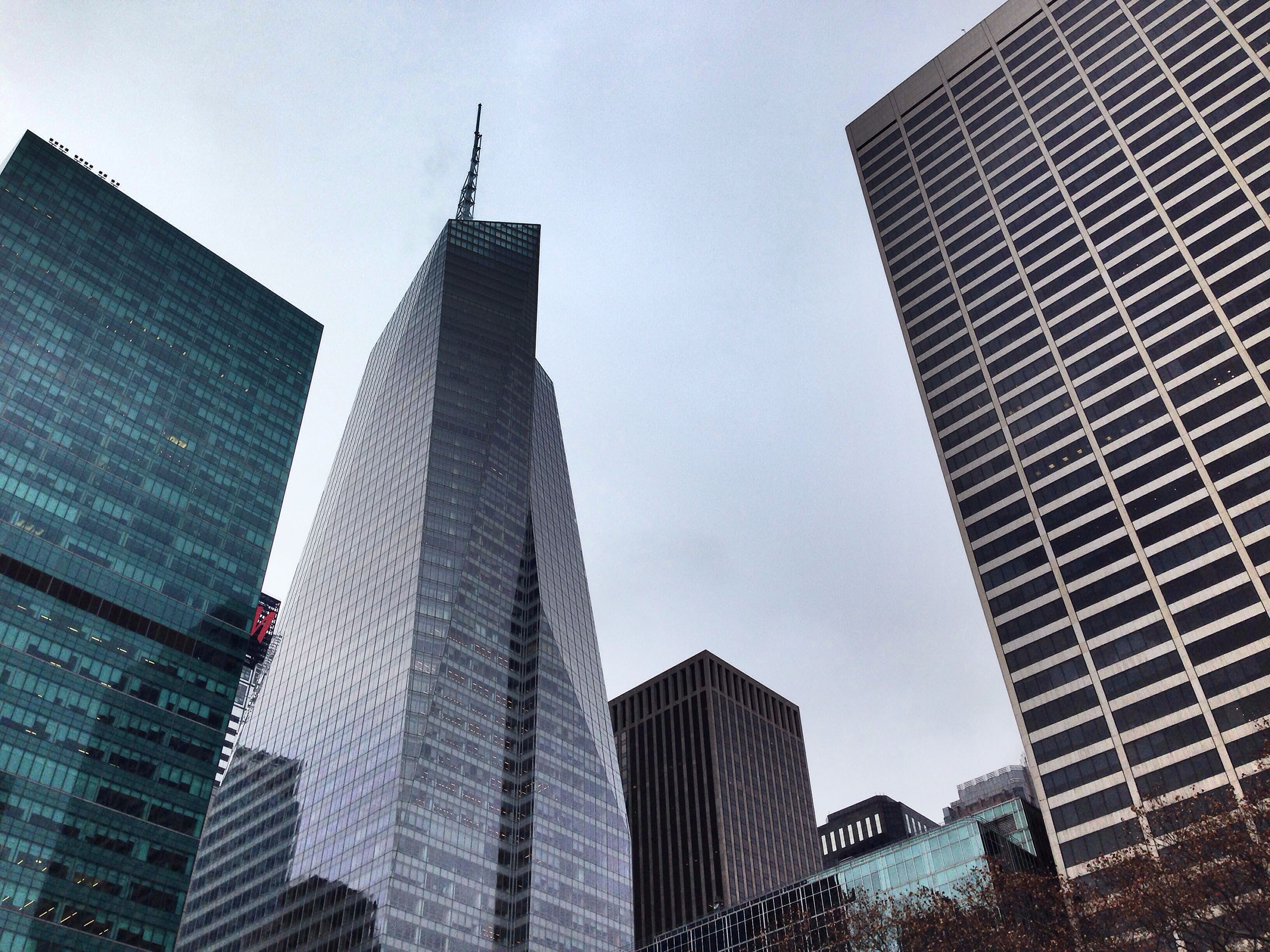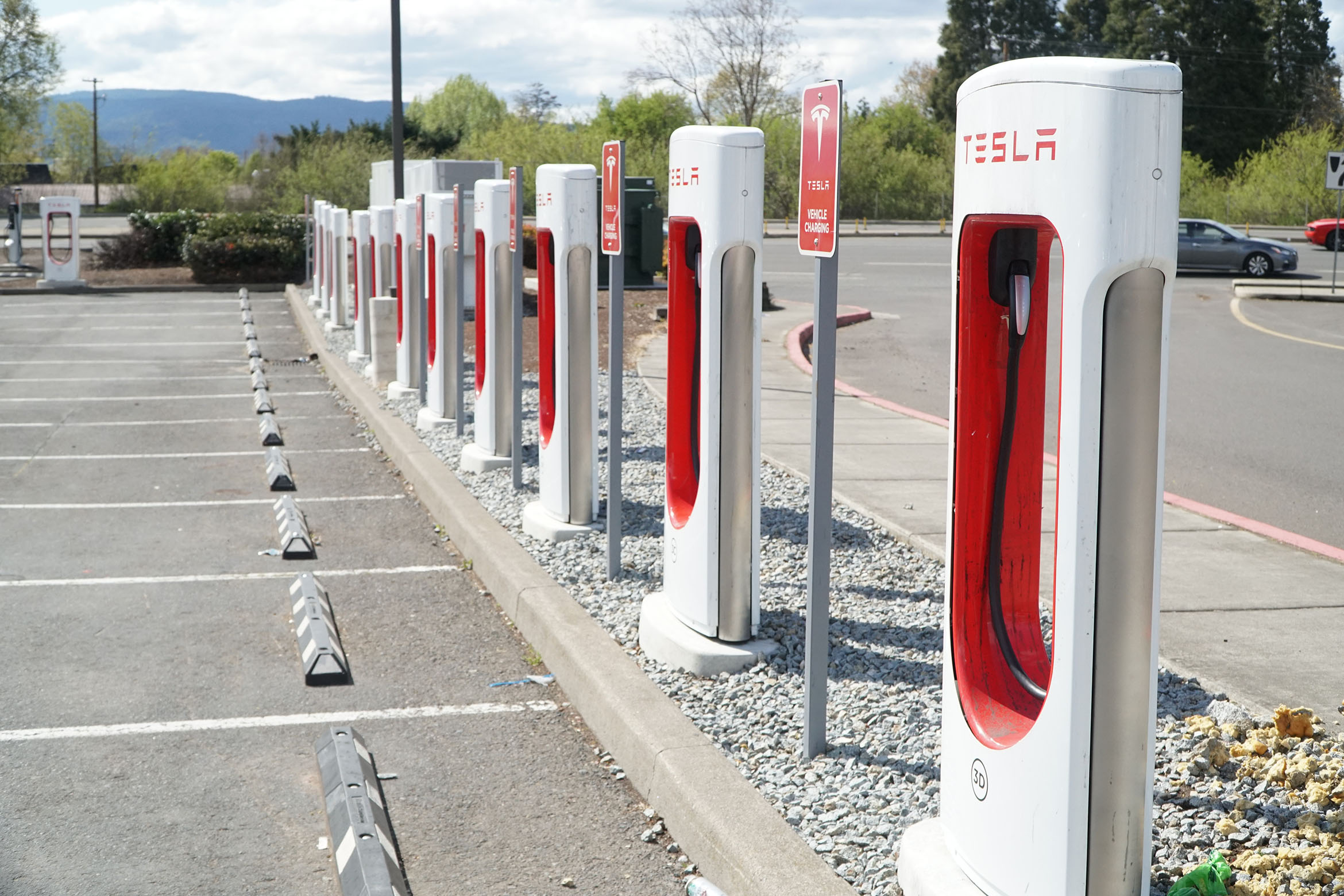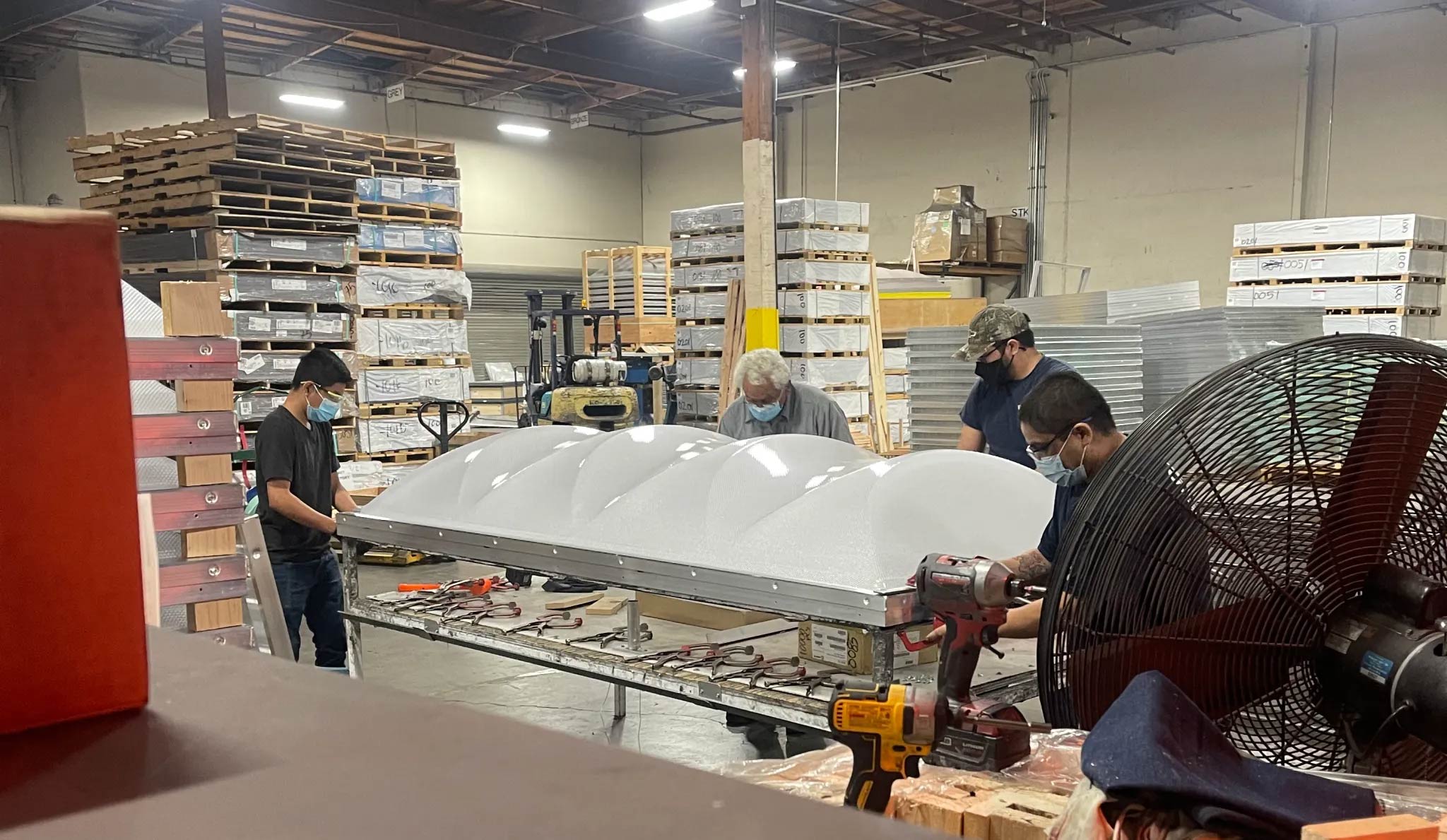The Green Shift
Climates are changing. Weather is changing. Cities are changing. Work is changing. Meet the people whose jobs put them on the frontlines of New York City’s response to the climate crisis.
We are celebrating 15 years — and counting — of stories that are deeply researched and deeply felt, that build a historical record of what the city has been.
The need for climate action by architects and planners cannot be understated. The built environment globally accounts for almost two-fifths of emissions-causing global heating. The smallest design decisions can have climate impacts orders of magnitude larger than changes we make to our personal lifestyle, diet, or travel habits. ThinkLab’s 2024 Benchmark Report shows that architects and designers bear responsibility for 40 times the purchasing power of an average consumer, with the ability to direct these dollars toward more (or less) sustainable alternatives. While individual acts of designers are meaningful, climate change as a collective problem requires a collective response — and solidarity across a traditionally fragmented building sector, including designers, the building trades, technicians, production workers, and frontline communities.
The building sector is deeply implicated in the fossil fuel economy: untangling this relationship will carry social consequences for the cities and landscapes where we live and work. Just Transition is a bottom-up worker-led movement to empower vulnerable communities and address climate change, hand-in-hand. A Just Transition foregrounds climate solutions with clear community benefits — things like social resilience, all-electric affordable housing, and community solar — as opposed to business-as-usual climate solutions like sucking carbon out of the air or constructing massive concrete seawalls to protect wealthy neighborhoods. As our work on building sites is structured to keep us apart, our organizing efforts are meant to bring us together, and to bring about a Just Transition. It is by building power as workers that we can best contribute to a sustainable future for all.
This conversation brings together Just Transition activists from across the building sector: Katie Lau, an architect and organizer with The Architecture Lobby’s Green New Deal Working Group; Celina Barron, an IBEW electrician and organizer with the Labor Network for Sustainability; and Rafael Cabrera, a production worker making efforts to unionize a Kingspan factory with the SMART union. – AB
This conversation includes a range of workers from across the building industry — from an architect who designs buildings, a building tradesperson who assembles them, to the factory technician manufacturing the products from which the buildings are assembled. Could you introduce yourself, describe your role in the building industry, and say what a Just Transition looks like from your perspective?
I’m an architect working for a design-build firm in Brooklyn, New York. A design-build firm is a little atypical compared to a traditional design firm. Our work is already focused on breaking down the barriers between what happens at the drafting table (computer monitor) and what happens on the jobsite.
In architecture, there’s a lot of emphasis on technical solutions to climate change — new materials, new ways of building, new project delivery methods — but it feels important to stay grounded in the idea that the most important technical solutions (passive design, electrification, low-carbon, and salvaged materials) are already here, but implementing them remains difficult. Implementation is difficult because the barriers to climate action are primarily political, and not technical, in nature. To overcome political barriers, we need to work with others in the building sector.
I’m a journey-level inside wire electrician with IBEW Local 11 in Los Angeles. I also organize with the Labor Network for Sustainability. In Local 11, members work for both the public and private sectors on new construction, renovations or retrofits, and industrial projects like wastewater treatment plants. Some of these projects support a Just Transition (work on schools or clean energy projects) and some do not (fancy residential projects and refineries). As the economy shifts toward cleaner alternatives, we are working to ensure that green jobs are good jobs.
For us, a Just Transition means work on clean energy projects is done by union hands. We see a trend where these green projects are going to non-union labor. We want to ensure that green projects are safe for workers and pay a living wage. We want these job sites to be equitable and free of bias — something where we see a big gap between non-union and union workplaces.
I’m a production worker for Kingspan Insulated Panels in Modesto, California. I’ve been there for about two and a half years. I’m one of the main rank-and-file organizers who are trying to get a safer workplace, and get the company to agree to a fair process for deciding whether we want a union. Kingspan advertise themselves as a “Planet Passionate” company. Their products are used everywhere — in football stadiums, at universities and schools, by tech companies, and by many architects. These people might use Kingspan products because they have green product labels and Environmental Product Declarations. I wish they cared as much about the workers as they did about the company’s sustainability claims.
When people see a newly constructed building, they just see the finished project. The working conditions in the factories creating these products are difficult and dangerous. Insulating foam and metal dust fills the air. Until we organized to demand Personal Protective Equipment, we were covered in this dust, breathing it in. We fought for and won ear protection, masks, eye protection, and better equipment to deal with the metals. In another building, there’s a pigeon infestation: it’s very unsanitary. The managers try to tell us that it’s normal. I told our manager, “Go grab a couple pigeons and put them in your office if it’s so normal!”
For us, a Just Transition means that a “Planet Passionate” company should be equally passionate about the health and wellbeing of its workers. Rather than looking to “green” product labels, we think designers and specifiers should listen to the workers assembling the products.
Almost by definition, business-as-usual approaches to sustainability don’t focus on the perspectives of workers. From your perspective, what’s the difference between business-as-usual sustainability and a worker-led just transition?
Within building design and architecture, the business-as-usual approach to sustainability focuses on marginal improvement within an inherently unsustainable way of building. A luxury high-rise that achieves LEED Platinum is still a luxury high-rise. Across the industry, we see a focus on sustainable products that can be substituted like-for-like, ensuring that efforts spent on sustainable design are not taken as opportunities to challenge the design brief or the dominant methods of buildings.
A worker-led Just Transition is focused on challenging what we build and how we build it. We need to cultivate power to refuse projects that aren’t worth building. Rather than only asking that the concrete has ten percent lower embodied carbon, a worker-led Just Transition is willing to ask if a project contributes enough to our shared future to merit pouring another 1,000 cubic yards of concrete.
We also need to challenge how things are built. The answer here won’t come from architects alone. Architects can show solidarity by listening to other sources of expertise, learning from building tradespeople, factory workers, and others working in the built environment. Just like integrated project delivery is most successful when team members share the design space, we envision sharing the design space with workers across the building sector.
We see a version of the same thing in construction. For electricians, business-as-usual approaches to climate change include things like installing electric car charging stations. This is important but falls short of the real solution of transitioning away from single-passenger vehicles!
We aim to consider things from top to bottom: what we build, how it’s built, and the materials from which it’s constructed. We’re all connected in this, but the current structure of the industry holds us apart. We get a drawing from a designer or engineer and our first thought is: “This is a silly way to do things.” Or we get a delivery of materials, and we complain that they’re defective. Sometimes, it seems like we only talk about other people in the building sector when we’re blaming them for our problems. But that’s not right. We envision a building industry where we can interact as workers with a shared set of interests. We’re all folks looking to continue to live on the planet and pass it on to our children. I don’t think that’s too much to ask!
In the meantime, it’s on us to figure out ways that we can build solidarity across the building industry. Rather than passing blame between us, we can start asking: How can we network and collaborate with our brothers and sisters across the building process? Otherwise, we’re just waiting for business interests to shape our response to the dire environmental situation we’re in.
Business-as-usual means that companies are going to do whatever they can to keep making money. Because we were getting organized about our working conditions (submitting OSHA complaints and talking to community allies), green organizations were able to connect the dots that there was evidence that Kingspan wasn’t being transparent in its Environmental Product Declaration. That EPD is now under investigation by the verifier.
When VIPs came to inspect the factory, I felt like I was on a movie set. Normally there’s dust and debris, but they pulled us off production work for a week to clean, hide the tools we normally use, and set up a new trash sorting system. The day after the inspection? Everything back to normal: foam and metal dust everywhere and no more trash sorting. Is this business-as-usual? Whose environment do they care about?
In a Just Transition, people listen to the perspectives and experience of workers on the ground, especially as it relates to environmental claims. Without the voice of workers involved, there’s no accountability. Workers at our factory take pride in what we do. We work hard, and support Kingspan’s “Planet Passionate” mission. We just ask that they are equally passionate about the workers in their factories!
A Just Transition for the built environment isn’t just about design and construction. How does your vision for a Just Transition consider communities living or working in the places we’re building?
It’s very straightforward. Organizing for a union in the Kingspan factories means health and safety enforcements and better working conditions. Better, safer, and more meaningful jobs will have positive effects across our community.
During the Covid-19 pandemic, people at our factory were making hard choices. A lot of them took pay cuts to keep their jobs. Major sacrifices. Now that we’re organizing, we’re starting to win that pay back, alongside better health and safety protocols. As we organize, workplace stress is reduced which also reduces stress in worker’s families and larger communities.
Thanks, Rafa. I appreciate you bringing it back to the pandemic. That was a major reminder for me of how important our communities are, and the importance of community spaces. The construction industry is pumping out brand-new buildings, but they aren’t often the buildings we really need. We need to get back to basics: the store, the hospital, the school, the daycare, the post office, and other buildings we as workers need and use on a day-to-day basis. In a Just Transition, I want a connection between the projects I do as a construction worker and the spaces I need as a community member.
Simply put, there’s no real difference between the people working in the building sector and the communities we serve — it’s the same people on a different day of the week. Involving construction workers more in the design process is also, in many cases, involving the community.
I think Celina said it perfectly. It underscores the larger theme of working to break down silos across the building sector. Much of my work is gut renovations of old New York City buildings. In these buildings, our work is only the latest in a series of renovations that have taken place over the last hundred or so years. The work of building is really a continuum, the constant labor and attention we need to make and re-make our world. I’d like to move away from the architect/developer vision of a project — of something designed and then completed — to an idea of maintenance of our shared environment. To consider simultaneously the building over time, the extractive systems it’s entangled with, the people who built it, and the people who are there. That thinking gets me to care about my work, and that care is at the center of how I see a Just Transition.
The views expressed here are those of the authors only and do not reflect the position of The Architectural League of New York.
Climates are changing. Weather is changing. Cities are changing. Work is changing. Meet the people whose jobs put them on the frontlines of New York City’s response to the climate crisis.



